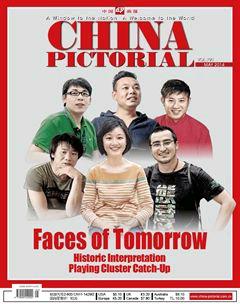Cluster Catch-up
by+You+Shanshan
Three major city clusters and economic circles have formed in China: the Yangtze River Delta, with Shanghai at the core and 30 radiating cities including Nanjing, Hangzhou, and Suzhou, the Pearl River Delta with Guangzhou and Shenzhen at the core and 10 radiating cities including Zhuhai and Dongguan, and the BeijingTianjin-Hebei cluster.
Over the past three decades since Chinas reform and opening-up, the three major clusters have served as three “engines” to drive the countrys rapid economic growth. Compared to the Yangtze and Pearl River deltas, however, the BeijingTianjin-Hebei region lags behind in terms of economic development. Particularly, the imbalanced development of various cities within the region is drawing mounting concern. Just 100 kilometers from Beijing, several Hebei counties remain painfully below the poverty line.
The Beijing-Tianjin-Hebei cluster covers area of 216,000 square kilometers, accounting for 2 percent of the nations land, but its population of 186 million accounts for nearly 8 percent of Chinas total population. Enhancing the regions potential and making it a new driver of Chinas growth have become national strategies.
Tipping the Scales
The core cities and satellite areas in a cluster should achieve balanced, coordinated development alongside each other. Consisting of 11 prefectural-level cities, the province of Hebei surrounds Beijing and Tianjin, both super municipalities with populations of more than 10 million. However, the dream of coordinated development has never been realized in the Beijing-Tianjin-Hebei region.
Back in 2005, the annual GDP of both Beijing and Tianjin had already surpassed 200 billion yuan, but the figure in most Hebei cities remained no more than 30 billion yuan. Currently, Beijings per capita GDP is three times that of Hebei as a whole, and 4 and 5 times that of neighboring Hebei cities Zhangjiakou and Chengde, respectively.
Considerable gaps between core and surrounding cities have become a significant contrast between the Beijing-TianjinHebei economic circle and its Yangtze and Pearl River Delta counterparts. The economic gap between core cities including Guangzhou and Shenzhen and small and medium-sized cities like Shunde and Dongguan in the Pearl River Delta isnt as wide, so lower-value-added industries can easily move from core cities to smaller satellite locales, forming a complete industrial chain. The Yangtze River Delta has also developed a mature city cluster: Mediumsized cities including Suzhou, Wuxi, and Changzhou surround Shanghai to form an efficient conduit to smooth industrial shifts in the region.
Beijing and Tianjin lack smaller cities that can supplement their industry. Most Hebei cities are less industrialized, and unable to accommodate industries moving out of Beijing and Tianjin. Such a gap prevents core cities from providing neighboring towns the opportunity to industrialize.
In these circumstances, underdeveloped cities are unable to introduce and absorb production factors and advanced management systems from developed core cities, while industrial enterprises in the core remain unwilling to relocate to peripheral areas due to their undeveloped industrial facilities.
Even worse, Beijing and Tianjin absorb resources from neighboring cities rather than benefiting them, which only exacerbates the gap between municipalities and surrounding areas. Presently, 32 Hebei counties still dip below the poverty line with more than 2.7 million poverty-stricken residents. The region features the sharpest gap between urban and rural areas on Chinas eastern seaboard.
Anywhere in the world, it is rare for a national capital to be surrounded by so many underdeveloped cities. If things continue as they are, the situation will cause an immeasurably negative impact on the political, economic, social, and ecological progress of northern China, and even obstruct the realization of Chinas overall economic growth goals.
Coordination
Fortunately, a “top-level design” for coordinated development of Beijing, Tianjin, and Hebei is coming amidst increasing concern about economic imbalance in the region. The issue has drawn attention from Chinese President Xi Jinping, who has stressed on many occasions that the development of Beijing must be incorporated into the strategy of building the Beijing-Tianjin-Hebei economic circle and the Bohai Economic Rim, which would eliminate barriers hindering regional development and inject vitality into Beijings advantageous resources. He also points out that Tianjin and Hebei cannot develop healthily without coordinating with Beijing.
On March 5, 2014, Chinese Premier Li Keqiang said that China would “further coordinate development in the Bohai Rim region and the Beijing-Tianjin-Hebei region”in the Report on the Work of the Government that he delivered during the opening meeting of the second session of the 12th National Peoples Congress. Analysts be-lieve that the integrated and coordinated development of the Beijing-Tianjin-Hebei region is a major goal of the Chinese government in 2014.
However, the job wont be easy considering the current obstacles separating Beijing, Tianjin, and Hebei. Just as President Xi stressed at a symposium, the coordinated development of Beijing, Tianjin, and Hebei requires construction of a new capital economic circle and the promotion of mechanism innovation for regional develop- ment. Policymakers need to find effective solutions to accelerate ecological progress and realize coordinated development of economics, resources, and environment, help Beijing, Tianjin, and Hebei complement each others advantages and stimulate the development of the core area of northern China. The coordinated development of the region has been formulated into an important national strategy.
Soon, the national strategy will begin operation.

